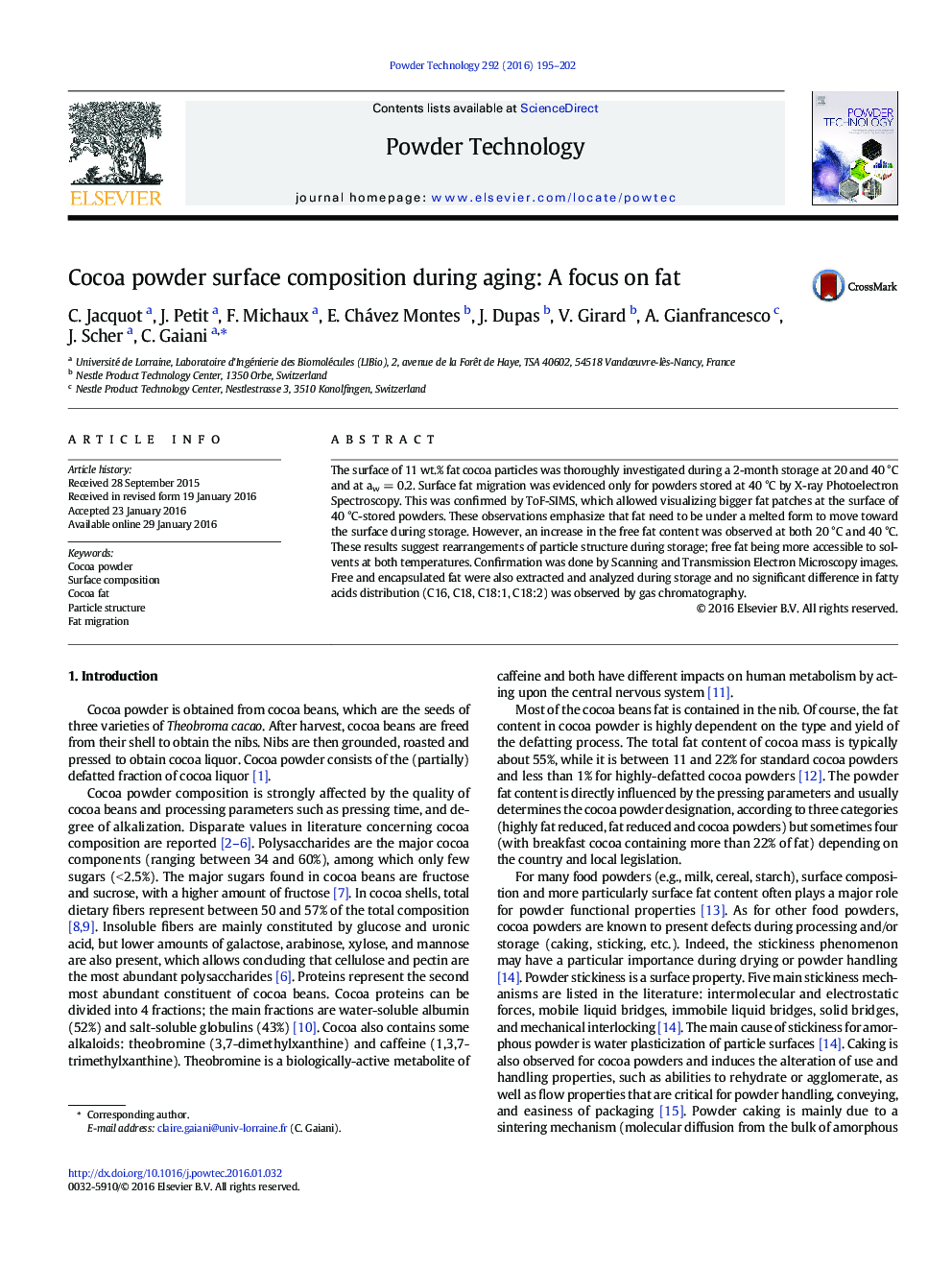| Article ID | Journal | Published Year | Pages | File Type |
|---|---|---|---|---|
| 235132 | Powder Technology | 2016 | 8 Pages |
•Two mechanisms happen on cocoa powder depending on storage temperature.•Particle internal modifications occur whatever the storage temperature.•Surface fat migration occurs only at elevated temperatures.•Fat migration leads to surface fat patches, fat bridges between particles and caking.
The surface of 11 wt.% fat cocoa particles was thoroughly investigated during a 2-month storage at 20 and 40 °C and at aw = 0.2. Surface fat migration was evidenced only for powders stored at 40 °C by X-ray Photoelectron Spectroscopy. This was confirmed by ToF-SIMS, which allowed visualizing bigger fat patches at the surface of 40 °C-stored powders. These observations emphasize that fat need to be under a melted form to move toward the surface during storage. However, an increase in the free fat content was observed at both 20 °C and 40 °C. These results suggest rearrangements of particle structure during storage; free fat being more accessible to solvents at both temperatures. Confirmation was done by Scanning and Transmission Electron Microscopy images. Free and encapsulated fat were also extracted and analyzed during storage and no significant difference in fatty acids distribution (C16, C18, C18:1, C18:2) was observed by gas chromatography.
Graphical abstractThat two mechanisms may have occurred during storage: (1) Internal particle modifications due to aging whatever the storage temperature, and (2) fat melting at 40 °C inducing surface fat migration, leading to the formation of fat patches at the cocoa particle surface and fat bridges between particles and caking.Figure optionsDownload full-size imageDownload as PowerPoint slide
